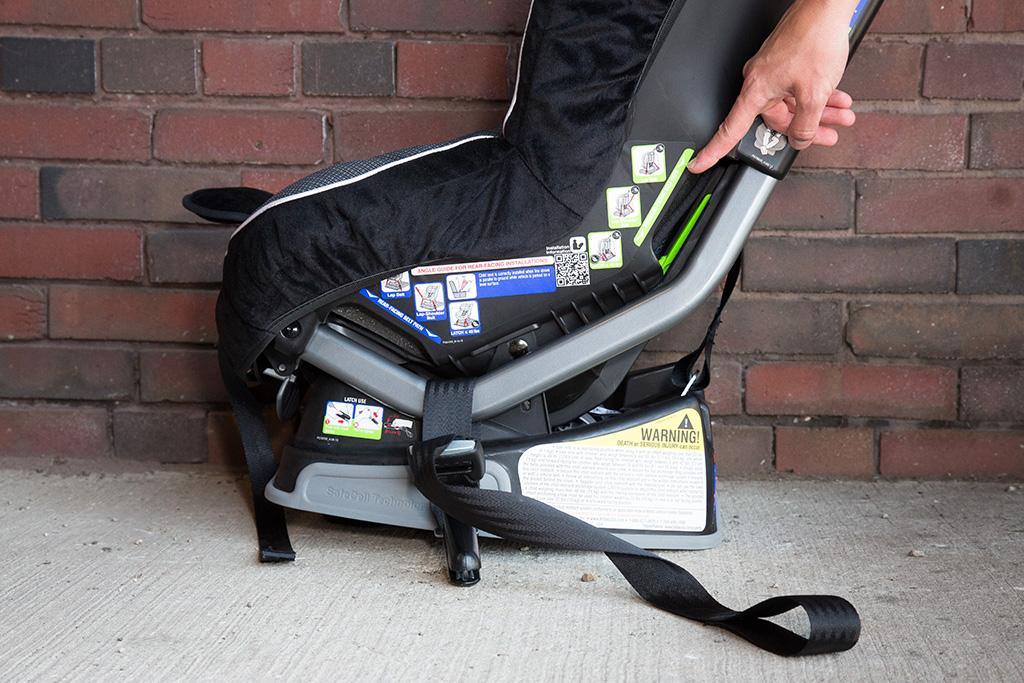
Update, Sept. 17, 2015: This week is National Child Passenger Safety Week, so we're highlighting content that parents can use to help keep kids and infants safe in cars. Many parents think that using the Latch anchors to install a car seat is a safer choice than using a seat belt. Using a seat belt can be just as safe, but parents need to do it correctly. Follow our how-to steps below.
The Latch system was designed to make child-safety seat installation easier for parents, but sometimes it doesn't work out that way. Despite the fact that all automakers have been federally mandated to include the lower anchors as standard equipment on all vehicles since September 2002, all Latch systems are not created equal, as we often discover during our Car Seat Checks.
Read More #FamilyCarAdvice
Buried or nonexistent anchors mean that the seat belt is often your best — or only — option when installing a car seat. This might make parents nervous, but a car seat installed with a seat belt can be just as safe as one installed with the Latch system, provided you know what you're doing. Follow these tips to ensure safe car-seat installation with a seat belt.
Most seat belts have a switchable retractor with two modes. In Emergency Locking mode, the seat belt strap can be pulled freely and will only lock into a tight, fixed position when the car abruptly slows or stops. You can switch a seat belt out of Emergency Locking mode and into Automatic Locking mode by pulling the belt freely until the strap webbing runs out, then ratcheting the slack back into the retractor for a fixed, tight strap.
You can switch between these two modes in most cars, which is important when installing a car seat: In order for a child-safety seat to be safely secured using a seat belt, you must make sure your car's seat belt is in Automatic Locking mode:
Step 1: Using your car seat's manual, find its seat belt path; this is a set of slots or holes generally located near the Latch connector strap path.
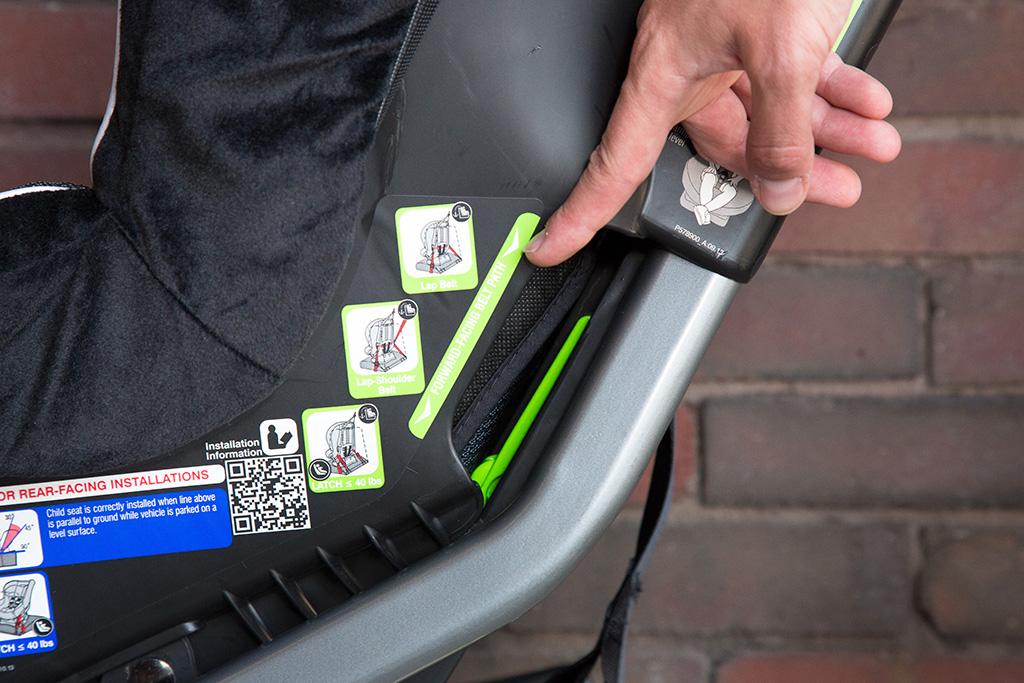
Cars.com photo by Evan Sears
Step 2: Feed the seat belt strap through the appropriate car-seat belt path and buckle the seat belt.
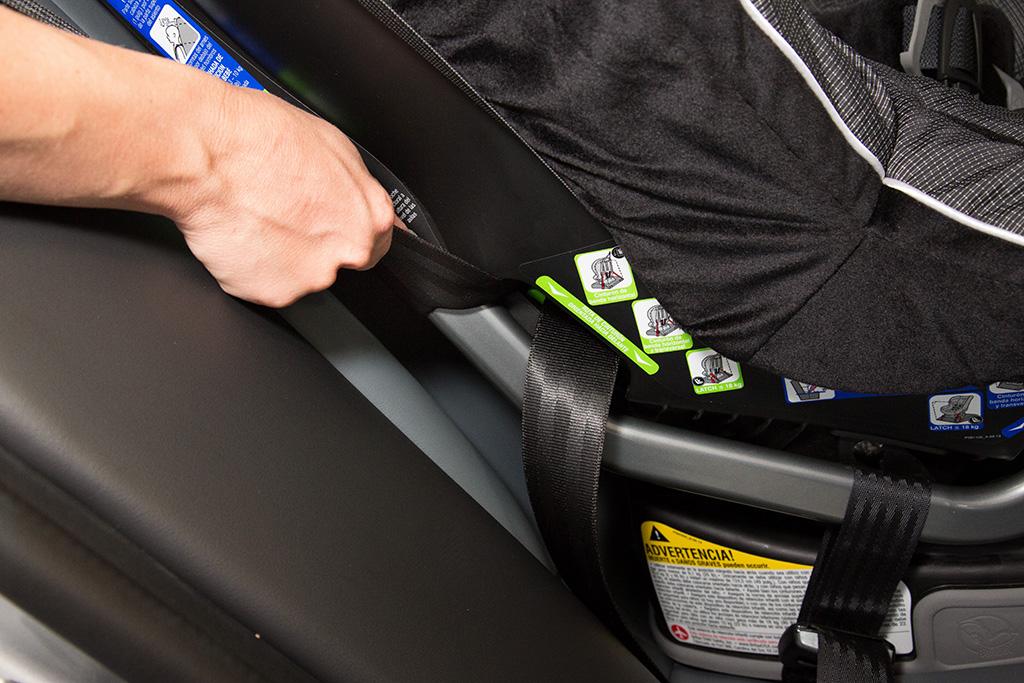
Cars.com photo by Evan Sears
Step 3: Pull the seat belt all the way out of the retractor. Do this slowly. You should hear a click when it's all the way out.
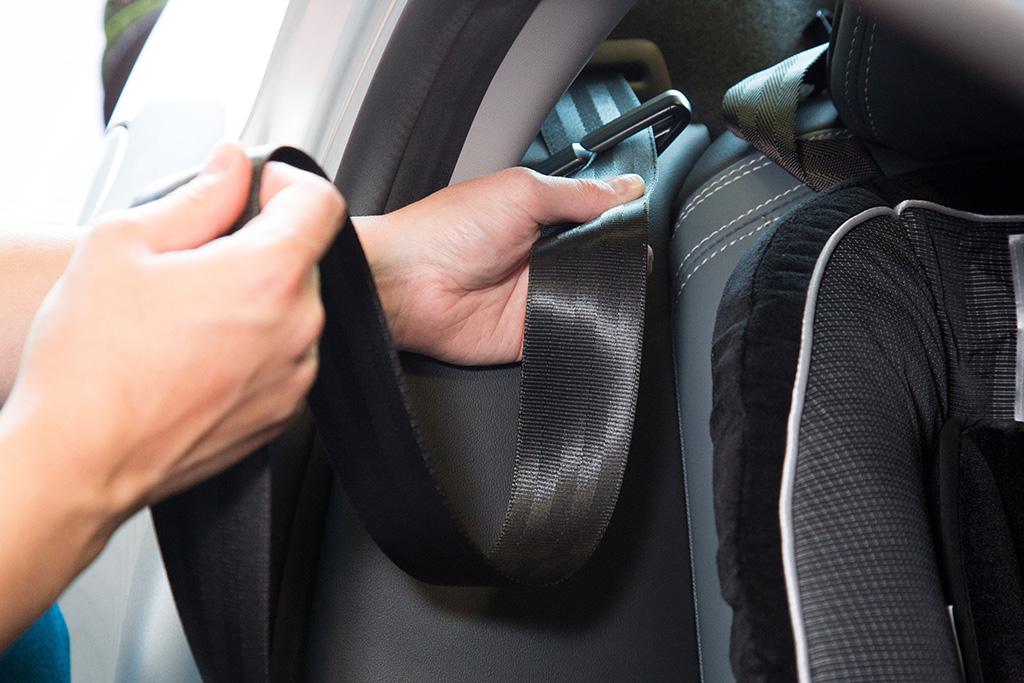
Cars.com photo by Evan Sears
Step 4: Feed the belt slack back into the retractor, listening and feeling for a ratcheting motion. If this isn't working, reference your car's owner's manual. Some vehicles have a button that switches between modes.
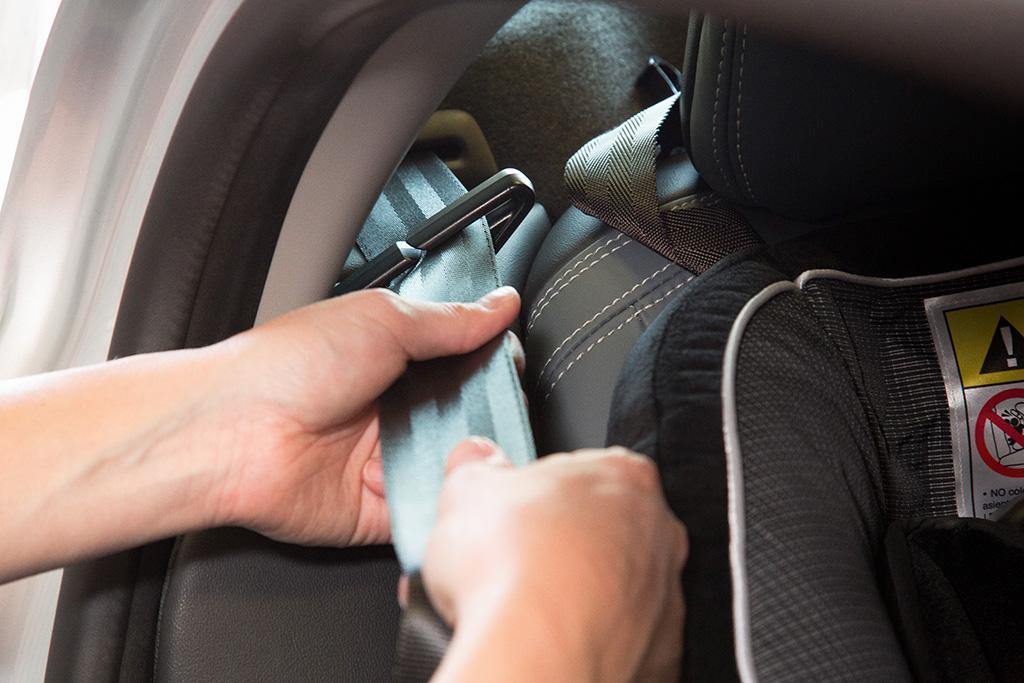
Cars.com photo by Evan Sears
Step 5: Pull up on the seat belt strap and feed it in as far as it will go, so the strap is completely taut and rigid. In a crash, the seat belt won't move at all, holding the car seat in place in much the way a Latch connector does.
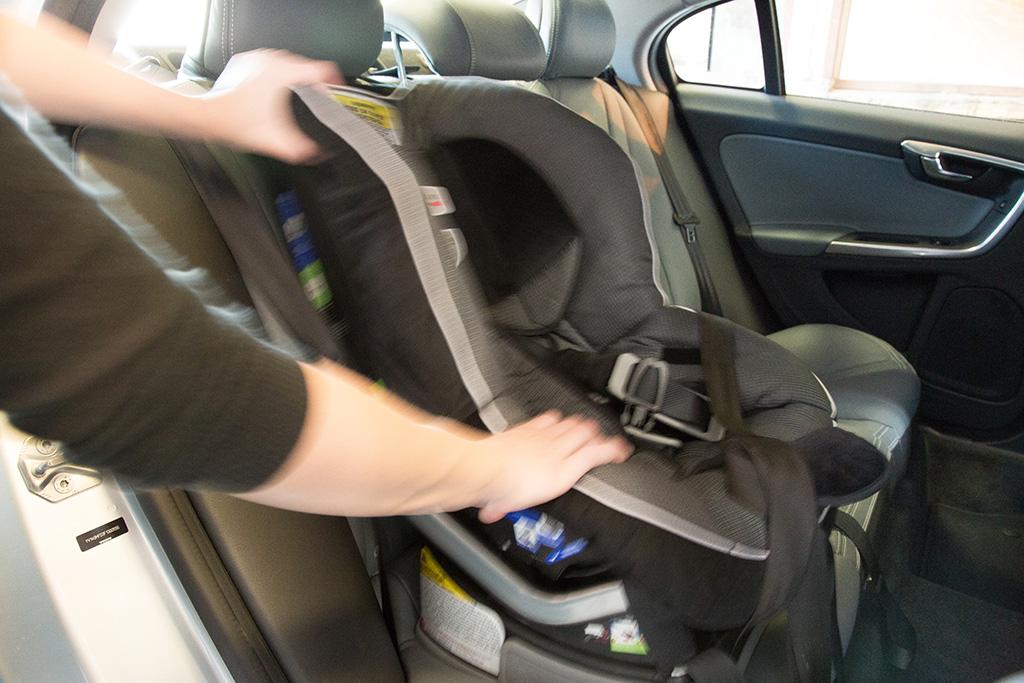
Cars.com photo by Evan Sears
Step 6: If installing a forward-facing car seat, don't forget to connect the tether strap to the top tether anchor. Just because you're not using Latch to install the car seat doesn't mean you can skip the tether anchor connection. Using the tether anchor lessens head and neck injuries in a crash.
If your car's seat belt retractor doesn't go into Automatic Locking mode — which could be an issue in older cars — you'll need to look at the owner's manual and lock the seat belt strap using the buckle's latchplate. This is the section of the buckle that holds the buckle clip to the strap. It can be locked so that the buckle doesn't slide along the webbing, effectively removing slack from the seat belt and locking it into position. Look for a small switch on the buckle.
If this still doesn't work, you'll need a belt shortening clip, which is a small metal clip that allows you to take out the seat belt's slack. A certified child-safety seat installation tech will have one; click here to find a tech near you.
Regardless of how you lock your seat belt, it's important to make sure your car seat isn't able to move more than an inch side-to-side. If your car seat is installed incorrectly, it will move around in the seat because the belt is not properly securing it, increasing the risk of injury in a crash.
No comments:
Post a Comment